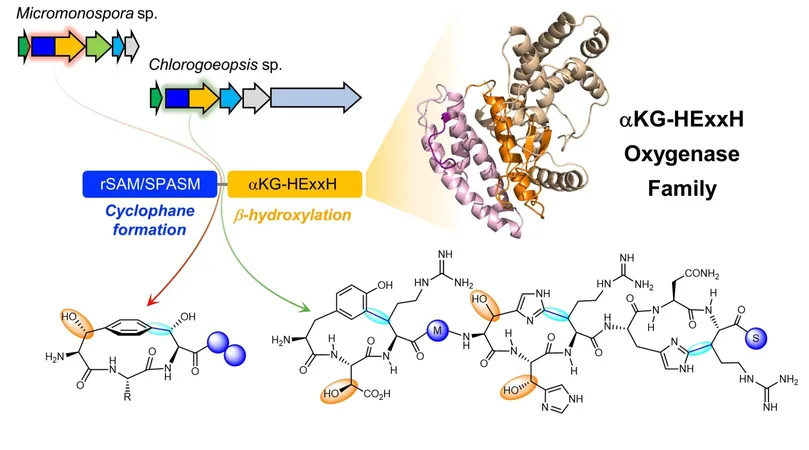
Groundbreaking Discovery: Unique Multidomain Enzymes from Bacteria Could Revolutionize Drug Development!
2024-10-28
Author: Arjun
Introduction
In a stunning breakthrough, pharmaceutical scientists from the National University of Singapore (NUS) have unveiled a unique multidomain enzyme that performs two vital reactions crucial for synthesizing drug molecules. This exciting discovery could pave the way for innovative therapies, enhancing our arsenal against life-threatening infections and cancers.
The Significance of Natural Products
Natural products derived from plants, animals, and microorganisms have long served as the foundation for numerous life-saving medications. Iconic drugs like ibuprofen and penicillin owe their existence to these compounds. However, the natural biosynthetic enzymes that produce these complex molecules are often intricate and difficult to replicate artificially. Hence, the identification of new biosynthetic enzymes opens new doors for drug development.
Research Insights
The pioneering research led by Assistant Professor Brandon I. Morinaka from NUS highlights the capabilities of multidomain enzymes that facilitate both cyclization and hydroxylation on a single peptide substrate. The challenges of achieving these transformations through conventional chemical methods underline the significance of this discovery.
Unique Features of the Enzymes
What sets these enzymes apart? They feature two unique domains: a radical SAM domain that drives cyclization and a hydroxylase domain responsible for hydroxylation. Intriguingly, while this hydroxylase domain was initially misclassified as a protease due to its structural resemblance to metalloproteases, researchers have classified it under an entirely new oxygenase family known as αKG-HExxH.
Collaboration and Publication
Collaborating with esteemed researchers like Professor Qi Zhang from Fudan University in China and Professor Yvain Nicolet from the University of Grenoble Alpes in France, the team highlights the innovative potential of these enzymes. The findings were published in the prestigious journal Nature Chemistry, signifying the importance of this research in the scientific community.
Future Implications
Professor Morinaka emphasized, "The integration of a multidomain protein for peptide modification and the identification of a novel oxygenase family will unlock new pathways in both natural product research and enzymology." The ability to modify peptides using separate reactions within a single enzyme represents a groundbreaking approach that could revolutionize drug design.
Conclusion
This pioneering research not only showcases nature’s incredible chemistry but also invites a range of potential applications in medicine. With the prospect of designing next-generation peptide drugs on the horizon, it could be just a matter of time before we see new treatments that significantly impact patient care. Stay tuned as we delve deeper into the implications of this research and what it could mean for the future of pharmaceutical development!



 Brasil (PT)
Brasil (PT)
 Canada (EN)
Canada (EN)
 Chile (ES)
Chile (ES)
 Česko (CS)
Česko (CS)
 대한민국 (KO)
대한민국 (KO)
 España (ES)
España (ES)
 France (FR)
France (FR)
 Hong Kong (EN)
Hong Kong (EN)
 Italia (IT)
Italia (IT)
 日本 (JA)
日本 (JA)
 Magyarország (HU)
Magyarország (HU)
 Norge (NO)
Norge (NO)
 Polska (PL)
Polska (PL)
 Schweiz (DE)
Schweiz (DE)
 Singapore (EN)
Singapore (EN)
 Sverige (SV)
Sverige (SV)
 Suomi (FI)
Suomi (FI)
 Türkiye (TR)
Türkiye (TR)
 الإمارات العربية المتحدة (AR)
الإمارات العربية المتحدة (AR)